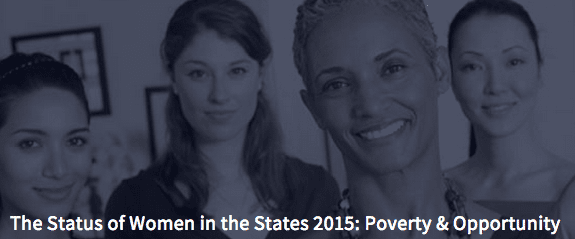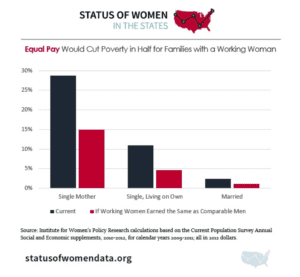Women have higher rates of poverty and much lower rates of business ownership than men in all 50 states, including the District of Columbia, despite having made significant progress over the last 25 years in attaining a college education.
The trend is especially pronounced among the youngest workers. Millennial women are considerably more likely than their male counterparts to have a bachelor’s degree or higher (36.3 percent, compared with only 28.3 percent of Millennial men), yet Millennial women have lower earnings than men in all but one state, and higher rates of poverty than Millennial men in every state in the nation.
That’s according to the latest report from the Institute for Women’s Policy Research’s The Status of Women in the States: 2015 project. The Women’s Funding Network is proud to be a national distribution partner for this series. The Status of Women in the States reports are being used to spur community and private investment in programs and policies that improve outcomes for women.
In this second of seven reports, released April 8, IWPR analyzed four indicators to create the Poverty & Opportunity Composite Index: educational attainment, business ownership, poverty, and access to health insurance coverage. IWPR then ranked and graded every state based on their composite scores in these areas.
Overall, the status of women with respect to poverty and opportunity has worsened in the majority of states (29) in the last decade. In 21 states and the District of Columbia, women’s status in these areas has improved. Across the United States, 15.5 percent of women live in poverty, compared with 11.9 percent of men. Native American (28.1 percent), Black (25.7 percent), and Hispanic (24.0 percent) women are all more than twice as likely to live in poverty as white women (11.7 percent).
The report notes that equal pay would cut the poverty rate for working women by more than half. If all working women received equal pay with men, who are of the same age, have the same level of education, work the same number of hours, and have the same urban/rural status, the report notes that the poverty rate for working women in the United States would be cut by more than half, declining from 8.1 percent to 3.9 percent.
The report also finds that women in the United States own a much smaller share of businesses than men. In analyzing access to health insurance, the report finds substantial increases in women’s health insurance coverage following the implementation of the Affordable Care Act (ACA).
More data on poverty and opportunity among millennial women, older women, immigrant women and women living with same-sex partners, along with detailed breakdowns by race and ethnicity, is available at: www.statusofwomendata.org.
In March 2015, IWPR released data on women’s employment and earnings, including projections on when women in each state would receive equal pay. Throughout the spring, IWPR will release additional reports with state-level data on Violence & Safety, Health & Well-Being, Reproductive Rights, Political Participation, and Work & Family.

